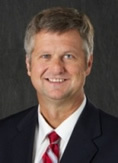Academic institutions should start making a more concerted effort to engage with and support aging employees as they continue to work well past the traditional retirement age, according to a new report from the University of Iowa Center on Aging and the TIAA-CREF Institute.

Promoting Workplace Longevity and Desirable Retirement Pathways within Academic Institutions is based on a study of 187 human resource specialists from academic institutions across the United States. According to the report, less than 5 percent of institutions surveyed identified issues pertaining to aging faculty and staff as a top institutional priority despite the fact that financial obligations to these employees constitute the largest growing part of university budgets. "The lack of attention being directed to the challenges and opportunities presented by the aging academic workforce is alarming," says lead report author Brian Kaskie, Ph.D., associate professor of health management and policy in the College of Public Health and associate director for the UI Center on Aging.
Kaskie notes that while colleges and universities already employ a disproportionately higher number of people age 65 and older relative to the labor force in general, a greater cause for concern is how the median age of the academic workforce has advanced significantly in the past decade.
"Between 2000 and 2010 the proportion of all professors 65 and older nearly doubled, and the aging professorate now outpaces all other white collar professions," continues Kaskie. "Academic institutions clearly are at the front of the aging workforce boom, and how our institutions respond will serve as an example for other industries to follow."
"Between 2000 and 2010 the proportion of all professors 65 and older nearly doubled, and the aging professorate now outpaces all other white collar professions."
—Brian Kaskie
The survey indicates that most colleges and universities currently pursue a piecemeal approach to addressing issues presented by aging employees, often developed in response to an immediate financial crisis rather than as part of a strategic plan.
The report recommends institutions address the aging workforce and develop wellness programming, retirement counseling services, workplace accommodations, and viable retirement pathways, such as early or phased retirement.
Also critical is having institutional leadership willing to develop a vision to address the needs of the aging academic workforce and to hire, train, and support staff dedicated to implementing such programs.
"The good news is that there is much that can be done to create more aging-friendly academic institutions, and it only takes a few people with a little investment," Kaskie says.
Click here for more on the UI Center for Aging. Click here for more on the TIAA-CREF Institute.